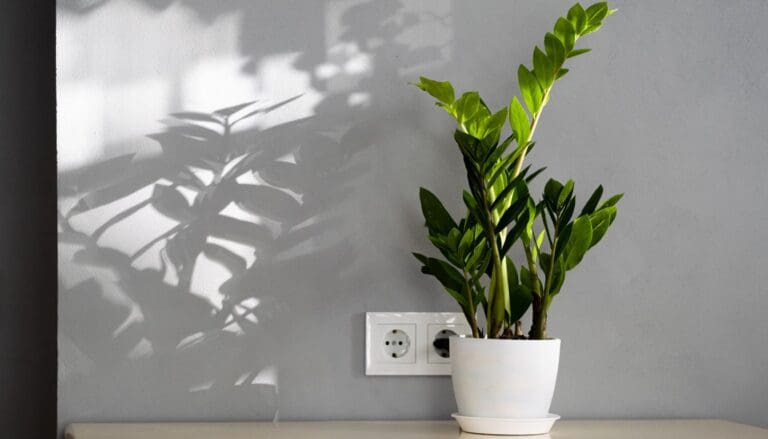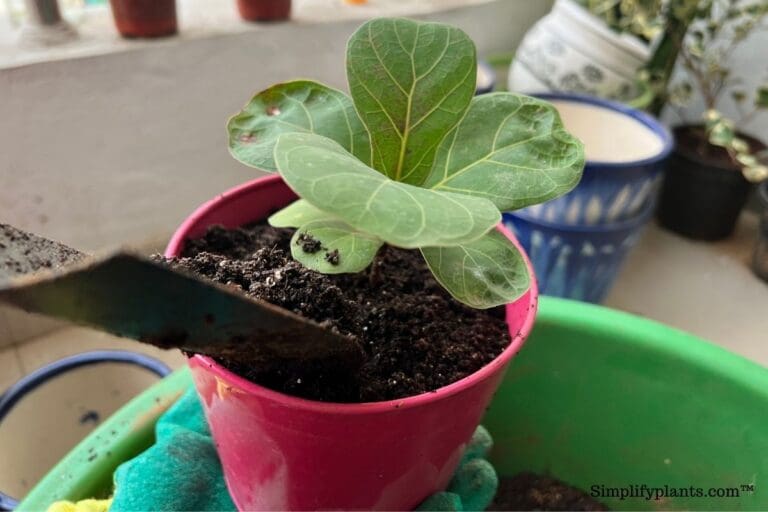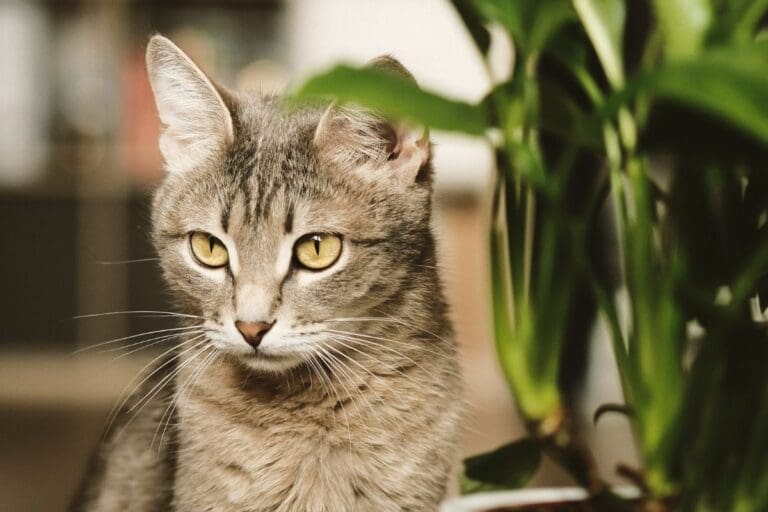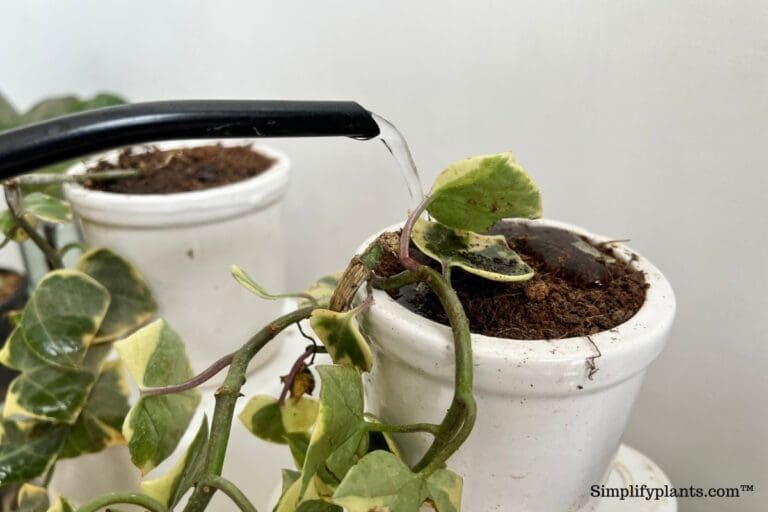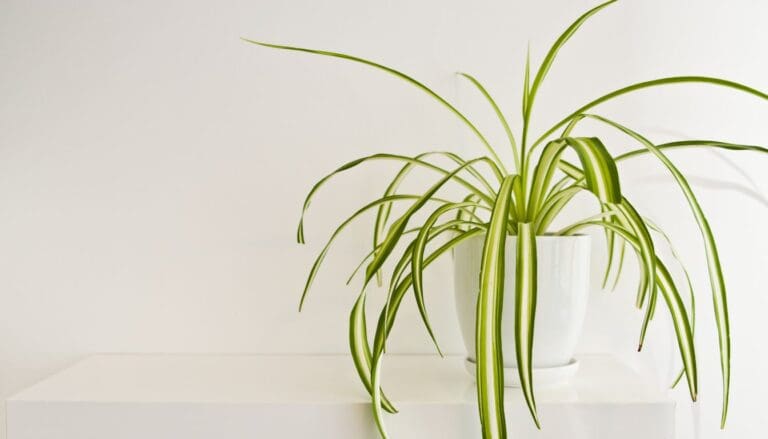Fertilizing Schefflera Plant: How Often, How To & Best Fertilizer!
Schefflera, or umbrella plant is a popular tropical plant that you will see in many households. And if you want to get one, you must learn how to fertilize it the right way. Let’s find out how often you should fertilize your Schefflera.
In general, Schefflera plants need to be fertilized every 1-2 months, from spring until fall. Use any balanced liquid fertilizer with an NPK ratio of 20:20:20. Always use a diluted liquid fertilizer to avoid the chances of overfertilization and avoid fertilizing in the winter months.
This article will cover how often you should fertilize, the types of fertilizers, and how you can fertilize and treat an overfertilized Schefflera. So, let’s understand the details about fertilizing your Schefflera plant.

Please note: Simplify Plants is reader-supported. Some links in the post are affiliate links and I get a commission from purchases made through links in the post.
Does Schefflera need fertilizer?
Schefflera or umbrella plants require heavy feeding and love being fed with regular doses of fertilizer every 1-2 months throughout the year.
Some people like to skip fertilizing, but you need to fertilize to see faster growth in your Schefflera.
If you wonder why fertilizing is important, you must understand that houseplants don’t get the nutrients naturally.
When you prepare the soil mix for your umbrella plant, you load it with nutrients, but those nutrients flow out of it or deplete over time.
If you don’t add fertilizers, the soil will soon fail to supply the required nutrients to the plant, which might lead to slow growth.
Some signs that the umbrella plant might give out when it doesn’t get enough nutrients are:
- Slow growth
- Weak stems
- Weak roots
- Discolored foliage
To avoid these problems, you must not skip fertilizing your umbrella plant.
How often should I fertilize my umbrella plant?

While some people like to fertilize their umbrella plants once a month, some fertilize once in 1-2 months.
You need to test and find out what works best for your umbrella plant.
If you are a beginner, start by fertilizing the plant once in 1-2 months and see how it reacts.
Then, you can switch to fertilizing once a month and check the reaction again.
Stick to the one that works the best.
My umbrella plant does well with fertilizing once in 1-2 months.
When should I fertilize my Schefflera?
Fertilize your Schefflera when it grows actively.
Schefflera is a heavy feeder, and it requires timely fertilization for proper growth.
And since they are fast-growing plants, their growth will largely slow down in the absence of fertilizers.
You must remember one more thing: you should fertilize your Schefflera when it is healthy.
Fertilizing an unhealthy plant can make it even weaker.
Consider fertilizing your Schefflera throughout the growing season and stop fertilizing in winter.
Winter is the dormant period when the plant rests and doesn’t require fertilization.
Fertilizing in winter will result in a sick plant.
What nutrients should I look for in fertilizers?

Houseplants need some specific nutrients that the fertilizers contain.
If you have some information about the nutrients, it will help you choose the ideal fertilizer for the umbrella plant.
So, let’s take a look.
| Nutrients | Ingredients |
|---|---|
| Macronutrients | Nitrogen, Phosphorous, Potassium |
| Micronutrients | Zinc, Iron, Nickel, Copper-Boron, Manganese–Molybdenum |
| Other nutrients | Magnesium, Calcium, and Sulphur |
- Macronutrients are very important for plants as they need them for many functions. From respiration and protein synthesis to cell development, macronutrients help with everything.
- Micronutrients are needed in small quantities and allow the plant to grow faster.
- There are also other nutrients that the plant needs, which might be there in the fertilizer.
Types of fertilizers
There are two types of fertilizers: organic fertilizer and inorganic fertilizer.
Let’s understand them in detail.
Inorganic fertilizers

Inorganic fertilizers are ones that you get in the markets.
These are created synthetically and contain chemicals, so many people don’t want to use them on their houseplants.
However, if you can use them correctly, your plants will only reap the benefits.
You can further divide inorganic fertilizers into these types:
Slow-release fertilizer: As the name implies, these fertilizers release the nutrients gradually.
If you have an outdoor umbrella plant, you might want to use a slow-release fertilizer, but it is not the best for indoor plants as you can’t decide the dose of nutrients that get released.
Liquid fertilizer: This is it if you are looking for the ideal fertilizer for your Schefflera.
You can adjust the dose of liquid fertilizers by diluting them with water.
Liquid fertilizers are found in both powder and liquid forms.
Granular fertilizer: The problem with these fertilizers is that they contain Nitrogen and Potassium in high amounts.
These are found in pellets.
You just need to mix them with the soil.
Therefore, these can adversely impact your plant’s growth and its roots.
Organic fertilizers
You can use organic matter to fertilize your plants.
These are perfect if you don’t want to put chemicals on your plants.
However, understanding how organic fertilizers work and how to use them the right way takes time and effort.
Also, you can’t control the nutrients that go into the soil when you use organic fertilizers.
Therefore, the best way is to start small.
I have listed some popular organic fertilizers to help you get started.
Organic Compost
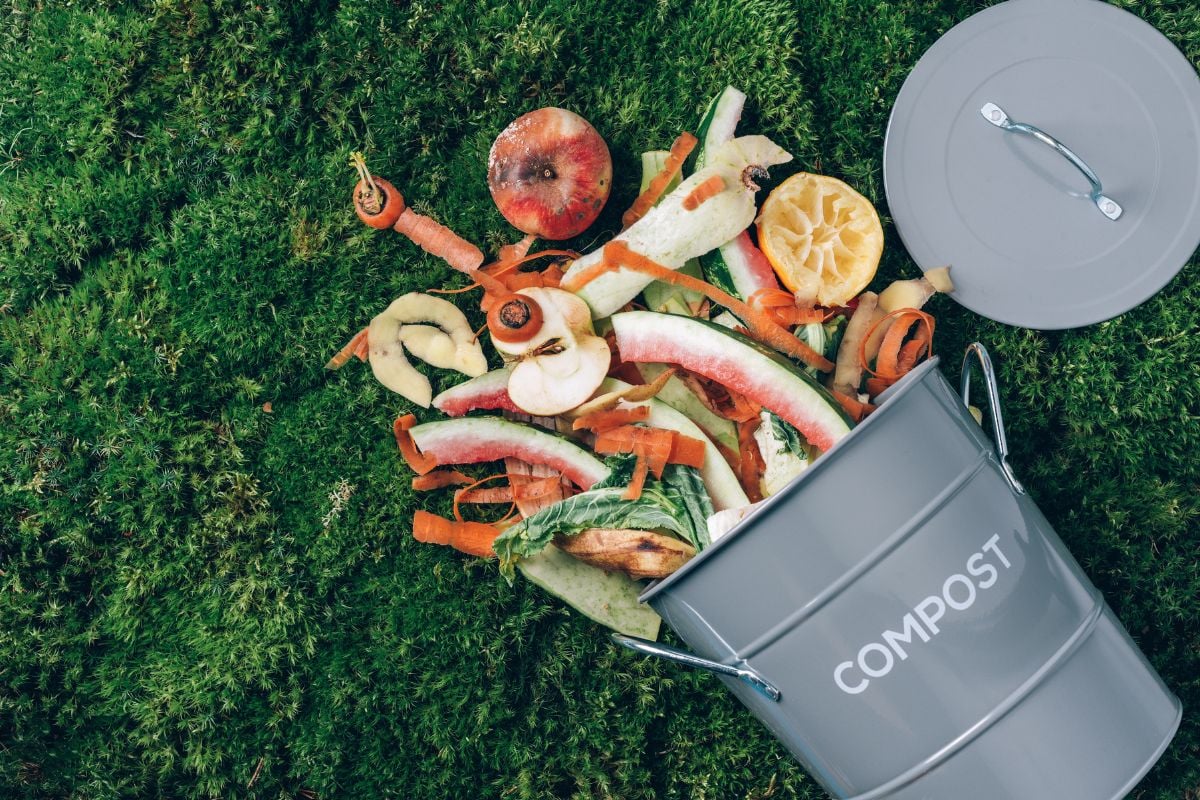
Add compost to the soil while preparing the potting mix for your Schefflera.
You can create organic compost by mixing organic kitchen waste, dried leaves, grass, etc.
Compost not only adds nutrients but also improves the soil structure.
Banana peels
These are readily available and are a great source of many nutrients.
Banana peels have:
- Nitrogen
- Phosphorus
- A lot of potassium
- Magnesium
So, if you want to use them for your Schefflera:
- Cut the banana peels into pieces.
- Mix the banana peels with water.
- Blend them well.
Once you get a creamy mixture, you can mix it with the soil.
If you don’t want to go for all the hard work, directly add banana peels to the soil.
However, keep in mind that this will release the nutrients slowly.
Coffee grounds

Umbrella plants prefer slightly acidic soil, and since coffee grounds make the soil acidic, these can be great fertilizers for these plants.
Coffee grounds contain ample Nitrogen that boosts the plants’ growth.
However, you should be careful with this.
If the soil is acidic already, adding coffee grounds can make it more acidic than needed, which is detrimental to your umbrella plant’s health.
Therefore, use it only after checking the acidity of the soil.
Follow these steps to create fertilizer from coffee grounds:
- Take a bowl.
- Add water to it and put it on the gas.
- Allow the water to simmer for some time.
- Put off the gas and leave the water aside until it cools down.
- After that, mix the coffee grounds with it.
- Let this mixture stay aside and let the coffee grounds break into the water.
- Strain the water and use it to fertilize the plant.
Aquarium water

You can use the water to fertilize your umbrella plant if you have an aquarium.
It’s easy, and it gives a boost of Nitrogen to the plant.
The fish poop collected in the aquarium water is a great Nitrogen source.
So, use it to fertilize your Schefflera organically.
Eggshells
Eggshells are readily available if you eat eggs.
Rather than tossing them away, use them for fertilizing your Schefflera.
Follow these steps:
- Clean the eggshells.
- Put them in the grinder to grind them.
- Take the fine particles, add them to the water, and leave them aside.
- You can utilize this next morning to fertilize your umbrella plant.
Remember: Eggshells reduce the soil’s acidity, so check the soil pH as umbrella plants prefer slightly acidic soil.
What is the best fertilizer for Schefflera?
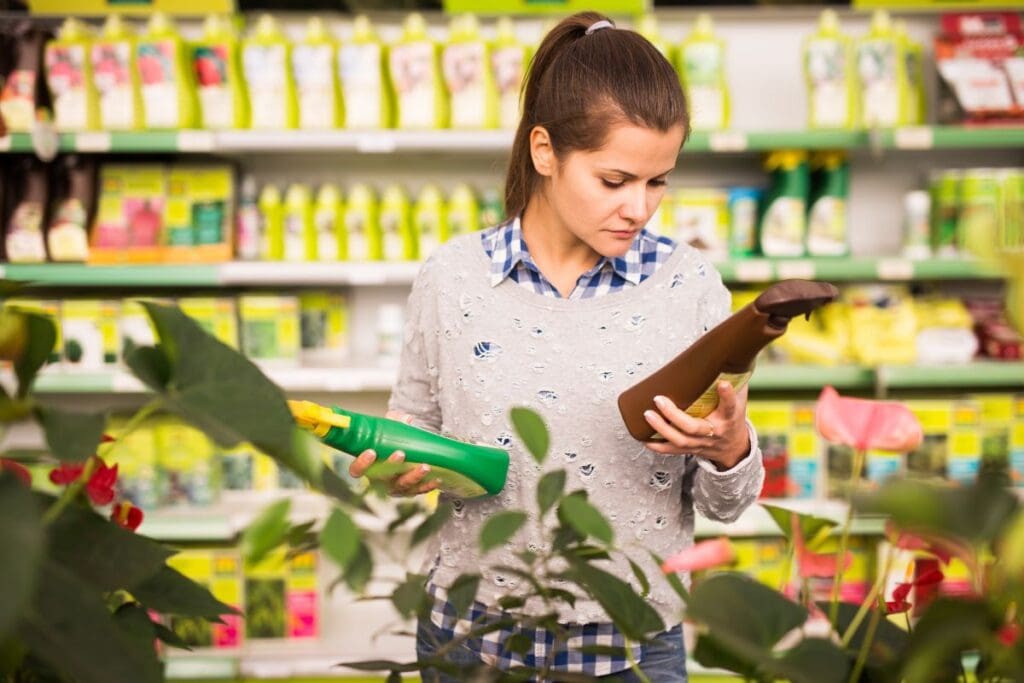
Different plants need different fertilizers, and your umbrella plant will not remain healthy if you give it the wrong one.
And since there are so many types and varieties of fertilizers available in the market, it is not unusual to get confused.
One thing that you must look for in fertilizers is the NPK ratio.
NPK is the macronutrients we discussed above: Nitrogen, Phosphorus, and Potassium.
Getting a fertilizer with the wrong NPK can cause overfertilization, and you don’t want that to happen.
Therefore, always check the label or the description of the fertilizer bottle before using it.
The ideal fertilizer for a Schefflera is one with balanced NPK 20:20:20.
Now, let’s take a look at the exact ways in which these macronutrients help your Schefflera.
| Nutrients | Functions |
|---|---|
| Nitrogen | Helps in photosynthesis Helps in protein synthesis Stimulates new growth |
| Phosphorus | Helps in photosynthesis and flowering Stimulates cell division and growth Promotes root growth |
| Potassium | Improves immunity Helps in water regulation |
Now that you understand the importance of choosing the right NPK, consider these suggestions to choose the best fertilizer for your umbrella plant.
- Jacks Classic 20-20-20 All Purpose Fertilizer
- Miracle-Gro Water Soluble All Purpose Plant Food
- Espoma Company Organic Indoor Plant Food
Before you fertilize, dilute the dose to avoid chances of overfertilization.
How do you fertilize a Schefflera plant?
After you understand how often and when you need to fertilize, how to do it becomes easy.
If it seems daunting, start by fertilizing less.
You can move up once you gain more confidence.
Here are the steps for fertilizing your umbrella plant:
- Order a fertilizer online or get one from the nearby market. You can get any from the suggestions I mentioned earlier.
- Add the fertilizer to the water in a watering can.
- Water your Schefflera with this to fertilize it.
- If you want to use organic fertilizer, add it to the soil once a month.
- The best way to fertilize would be to alternate between your regular fertilizer and an organic fertilizer like compost or coffee grounds.
Can Schefflera get overfertilized?

Overfertilization can be extremely damaging for your umbrella plant.
It is common, and many plant owners, especially beginners, face it.
Overfertilization occurs when you:
- Excessively fertilize your Schefflera.
- Use a heavy dose
- Use the wrong NPK fertilizer.
- Fertilize an unhealthy plant
- Fertilize during the winter season.
If you think you have made any of the above mistakes, your umbrella plant will show these signs:
- Slow growth
- Brown leaf edges and tips
- Damaged roots
- Wilting leaves
- White layer on the topsoil
If you come across one or more of these signs, you must act fast and treat the plant before too late!
How do you fix an overfertilized Schefflera?
I have explained how you can fix an overfertilized Schefflera plant with these steps:
- Check the signs and the plant thoroughly.
- Take the plant out of the pot and check the roots.
- Prune the leaves, stems, and roots that seem affected by the overfertilization.
- If you notice a thin white layer of fertilizer on the soil, scrape the topsoil to remove the excess salt build-up.
- Take the plant to the sink or bathtub and run water through the soil 3-4 times to leach out the extra fertilizer.
- If the soil has a lot of salt build-up, repot your umbrella plant with fresh soil.
- Don’t fertilize for at least 3-4 months and wait for the plant to recover completely.
- Resume fertilizing after your umbrella plant shows new growth.
Sum up

Fertilizing is an important part of the care routine of your Schefflera or umbrella plant. After reading this article, you must have understood that fertilizing can affect the plant’s growth rate, so you shouldn’t skip it.
Fertilize your umbrella plant with a balanced liquid fertilizer with an NPK of 20:20:20. Dilute the fertilizer to half-strength to avoid overfertilization. Fertilize every 1-2 months throughout the growing season, and don’t fertilize in winter.
Start with less if you are unsure of the frequency or amount of fertilizer your Schefflera needs. If you notice signs of under fertilization, you can increase the frequency or the amount of fertilizer you use.
However, be careful of overfertilization as it does more damage than under fertilization. If your Schefflera is overfertilized, stop fertilizing, remove the affected parts, scrape the topsoil or leach out the excess fertilizer. You can consider repotting with fresh potting mix in extreme conditions.
Reference: Wikipedia, Sciencedirect, Britannica, American Society for Horticultural Science, Schefflera taxonomic history.
Recommended Garden Supplies
| Product Image | Our Recommended Gardening Supplies | Check Offers! |
|---|---|---|
Top Top
Top
Top
Top
Top
Top
Top
Top | rePotme Houseplant and Tropical Classic Potting Soil Mix | Check Offer On Amazon |
 Top
Top
Top
Top
Top
Top
Top
Top | Espoma Organic Indoor Plant Food | Check Offer On Amazon |
 Top
Top
Top
Top
Top
Top
Top
Top | GooingTop LED Grow Light 6000K Full Spectrum Clip Plant Growing Lamp | Check Offer On Amazon |
 Top
Top
Top
Top
Top
Top
Top
Top | Soil Moisture Meter | Check Offer On Amazon |
 Top
Top
Top
Top
Top
Top
Top
Top | Govee Hygrometer Thermometer, Bluetooth Enabled! | Check Offer On Amazon |
 Top
Top | LEVOIT Humidifiers for Large Room(Best For Plants) | Check Offer On Amazon |
 Top
Top
Top
Top
Top
Top
Top
Top | Upgraded DIY Automatic Drip Irrigation Kit, 15 Potted Houseplants Support | Check Offer On Amazon |
 Top
Top
Top
Top
Top
Top
Top
Top | Stainless Steel Heavy Duty Gardening Tool Set | Check Offer On Amazon |
 Top
Top
Top
Top
Top
Top
Top
Top | Bonide Insecticidal Soap | Check Offer On Amazon |
 Top
Top
Top
Top
Top
Top
Top
Top | Bonide 32 oz Spray Neem Oil for Organic Gardening | Check Offer On Amazon |
 Top
Top
Top
Top
Top
Top
Top
Top | Garden Safe Fungicide | Check Offer On Amazon |

